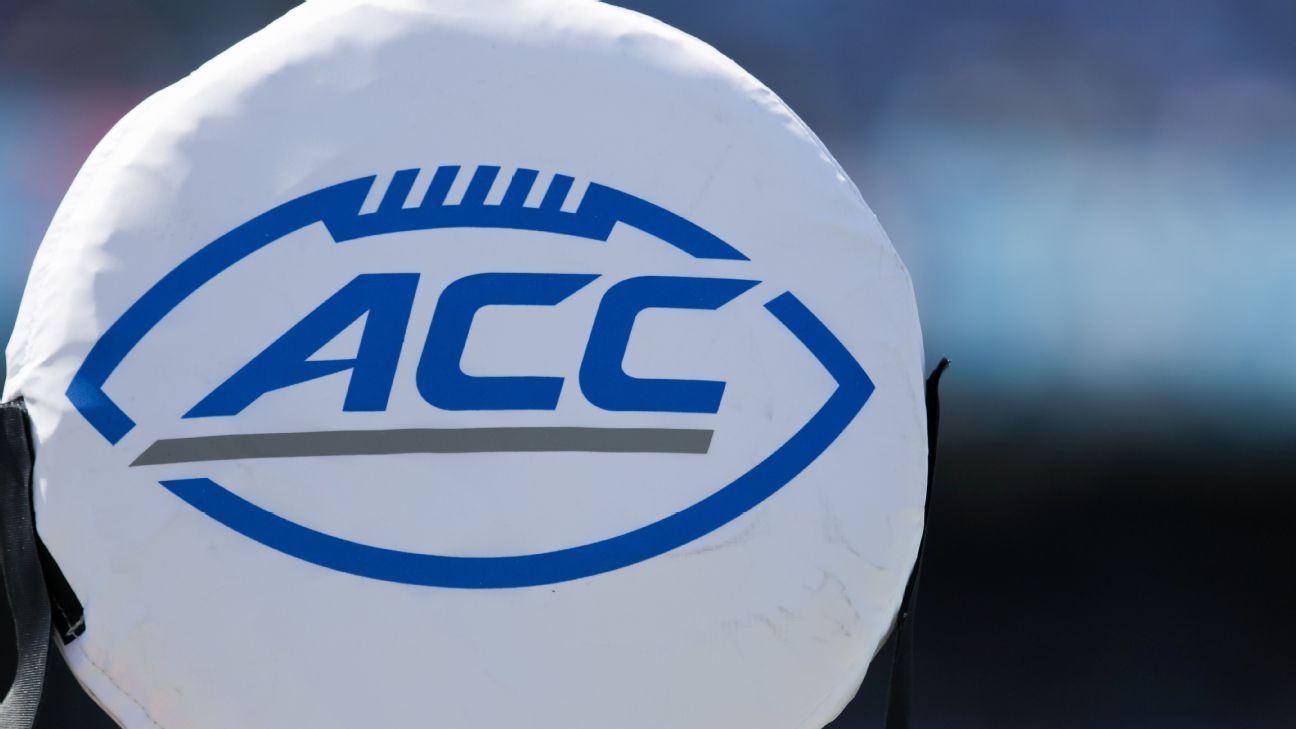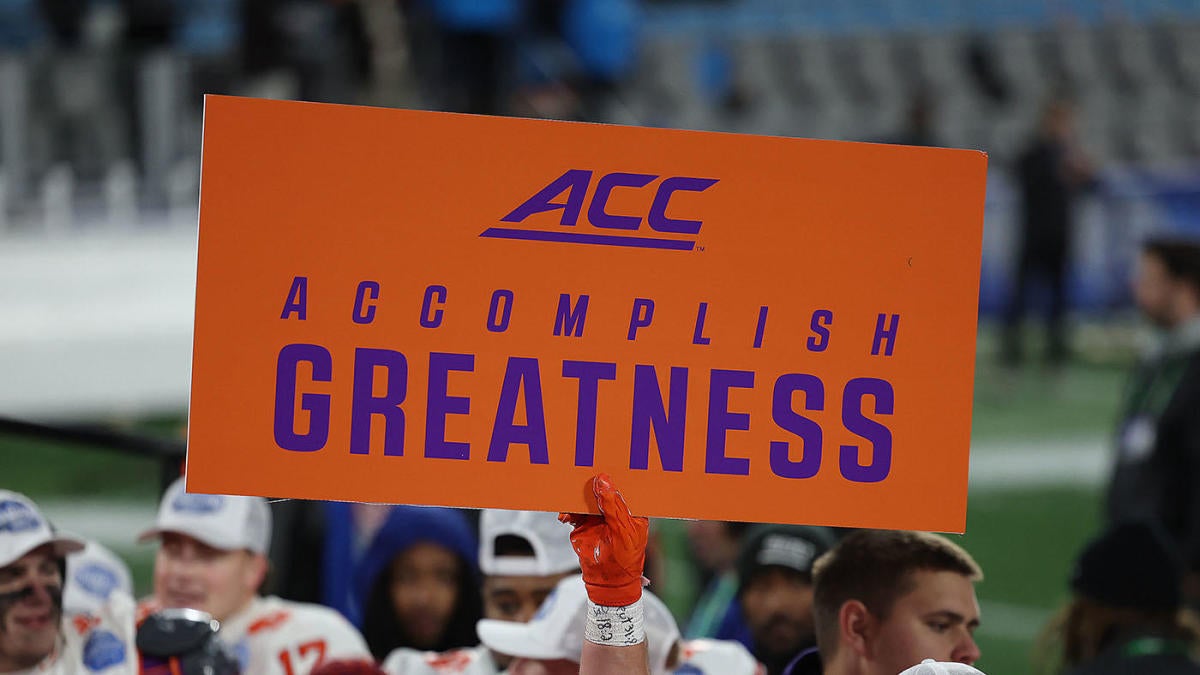"continued"? JFC what is that, War and Peace?
Here's another lengthy Dennis Dodd article (i.e. War and Peace volume 2... ). Still a good summary of what transpired (and why) in the ACC deal with Clemson and Free Shoes.
). Still a good summary of what transpired (and why) in the ACC deal with Clemson and Free Shoes.
The ACC has bought itself time by settling with Florida State and Clemson, but the writing is on the wall

www.cbssports.com
ACC settlement paradox is one of strength and futility, but college sports will eventually tear itself apart
The ACC has bought itself time by settling with Florida State and Clemson, but the writing is on the wall
Two things can be true regarding the ACC's settlement this week of the crippling lawsuits brought by Florida State and Clemson: the resolution provides long-desired security and solidarity for a conference that looked to be ripped apart by those schools' saber rattling ... and it also provides a blueprint detailing how college sports could be ripped apart.
In settling the suits, the ACC rather dramatically stratified itself. There are clear dividing lines not unlike society itself (upper, middle and lower class). Without disrespecting anyone, we'll leave it to the reader to figure out those classes. Just understand this is what Florida State and Clemson wanted -- recognition that they are bigger brands and have more invested in football than other member schools.
That's not necessarily a bad thing. One, that economic recognition kept the conference together. Also, it's been done before. In realignment, the Big 12 and Big Ten welcomed new members who agreed to take fractions of a full share to join. The ACC itself took SMU when the school agreed to take no media rights revenue for nine years. Stanford and Cal took 30% shares to be able to play major college football when the Pac-12 fell apart.
In fact, the Pac-12 broke apart, in part,
because everyone was receiving equal shares. (Well, that and the doomed Pac-12 Network and league president asleep at the wheel.) Ask USC and UCLA, which simmered for years over that fact.
So what's the big deal in the ACC? If it wasn't already, now the conference has established itself as the clear No. 3 among the Power Four. Any arrangement that keeps the league out of court is a win.
Going forward, 40% of ACC revenue will be distributed between the 14 legacy schools and 60% will be set aside for winning bonuses and those high-achievers in TV ratings.
But look deeper. There is disparity in what is a significant reorganization of revenue. While schools achieving bonuses by winning championships could earn $30 million more in a given year, others will get $7 million less.
Every school in the conference walked into this agreement with their eyes wide open. What they didn't see (or admit) is a troubling future – a different future in a parallel universe.
It is a universe in which only a portion of the 134 FBS schools survive to call themselves FBS schools. A new ecosystem of "haves" is already being created on a national scale.
You should remember the Super League and Project Rudy that were largely dismissed by the power commissioners when the proposals came out last year. Both of their models would reduce the highest level of college football to 70-80 schools with centralized governance. That centralized governance and outside investment would unlock billions that have been tied up in separate conference media rights deals over the years.
Essentially, that would mean less loyalty to the SEC, Big Ten, ACC and Big 12 and more loyalty to whoever is running that combo of 70-80 schools.
It would also cause a lot of people to alter their career paths. Greg Sankey (SEC commissioner) and Tony Pettiti (Big Ten commissioner) might be out of a job in that model.
The Super League folks were so brash in their roll out, CBS Sports asked one of their members last year about the prospects of the SEC and Big Ten commissioners role in a new college football landscape.
"We'd buy them out," that person said, more than half seriously.
Without saying it, the conferences -- not just the ACC -- are saying it: the breakaway that has long been discussed is taking place before our eyes. There is going to be a day when the likes of Alabama wakes up and asks itself, "Exactly
why is Vanderbilt making the same money as us?" Same for Ohio State and, say, Purdue.
In the ACC, FSU, Clemson, Miami and North Carolina are the biggest brands. The new revenue sharing plan is merely a formal recognition. Whether they have a similar wake-up call is not the issue.
This eventual awakening represents the ongoing consolidation of the sport. Realignment has claimed the Pac-12. It has also empowered the 34 schools that make up the SEC and Big Ten. Nothing of consequence happens in college athletics happens without their say-so.
Whether those conferences would cede power for the greater good -- meaning more money -- has yet to be determined.
But that money is becoming available. The Super League would be backed by private equity. Third-party investment in college athletics is already about to blow up in a big way, so dismissing the Super League/Project Rudy because of its funding plan doesn't make sense.
The Big 12 considered a private equity infusion of as much as a $1 billion, CBS Sports first reported last year. The Big Ten is reportedly looking at a private equity investment. Since at least last summer, American Conference commissioner Tim Pernetti has been bullish publicly on considering outside investment in his conference.
"I'm encouraged because everybody is out there doing it," Pernetti told CBS Sports of investment opportunities in the sport. "It's great. Not only is investment important but the expertise that comes with that investment is important."
Consider all of it a reflection of media rights revenue economics. Eighty percent of any media rights deal is based on a conference's football value. Inside that, the value of any conference is held by the top three or four teams.
Do the math, for the ACC and the sport. The blueprint then is already in place for roll out (more or less) by about 2030 when the current media rights deals (except the ACC) all expire.
.
.
.
continued






